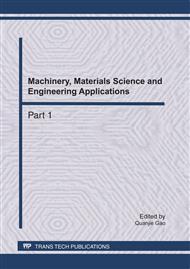p.191
p.196
p.204
p.209
p.216
p.222
p.227
p.233
p.237
Classical-Quantum Correspondence in Two-Dimensional Nanomaterials
Abstract:
Two-dimensional nanomaterials are becoming the focus of intensive research due to their novel physical properties and the potential applications in nanodevices. We define a quantum spectrum function using the eigenvalues and the eigenfunctions in the system of two-dimensional nanomaterials. We find that the Fourier transform of the quantum spectrum function reveals a lot of information of the classical orbits from one point to another for a particle in the two-dimensional nanomaterials. These results give new evidence about the classical-quantum correspondence. All the methods and results can be used in a lot of other systems, including some one-dimensional and three-dimensional systems. The researches about these systems are very important in the field of applied science.
Info:
Periodical:
Pages:
216-221
Citation:
Online since:
April 2011
Authors:
Price:
Сopyright:
© 2011 Trans Tech Publications Ltd. All Rights Reserved
Share:
Citation:


